You’ve probably heard of the Texas burn ban, but do you know what it entails? Simply, it means you must think twice before considering the possibility of an outdoor fire in Texas. This is because this fall, the weather is incredibly dry, which might cause the spread of wildfires.
A burn ban is in effect in many counties in Texas due to the increasing drought and slightly high wind speed. According to the U.S. Drought Monitor, Eastern counties are more severely affected by drought, which may cause serious problems.
Key Points:
- Texas burn ban prohibits outdoor fires due to dry weather and increased wildfire risk.
- Reasons for implementing burn bans include drought conditions, high fire danger, air quality concerns, and protection of property and life.
- Violating the burn ban can result in criminal charges, fines, restitution, civil liability, and jail time.
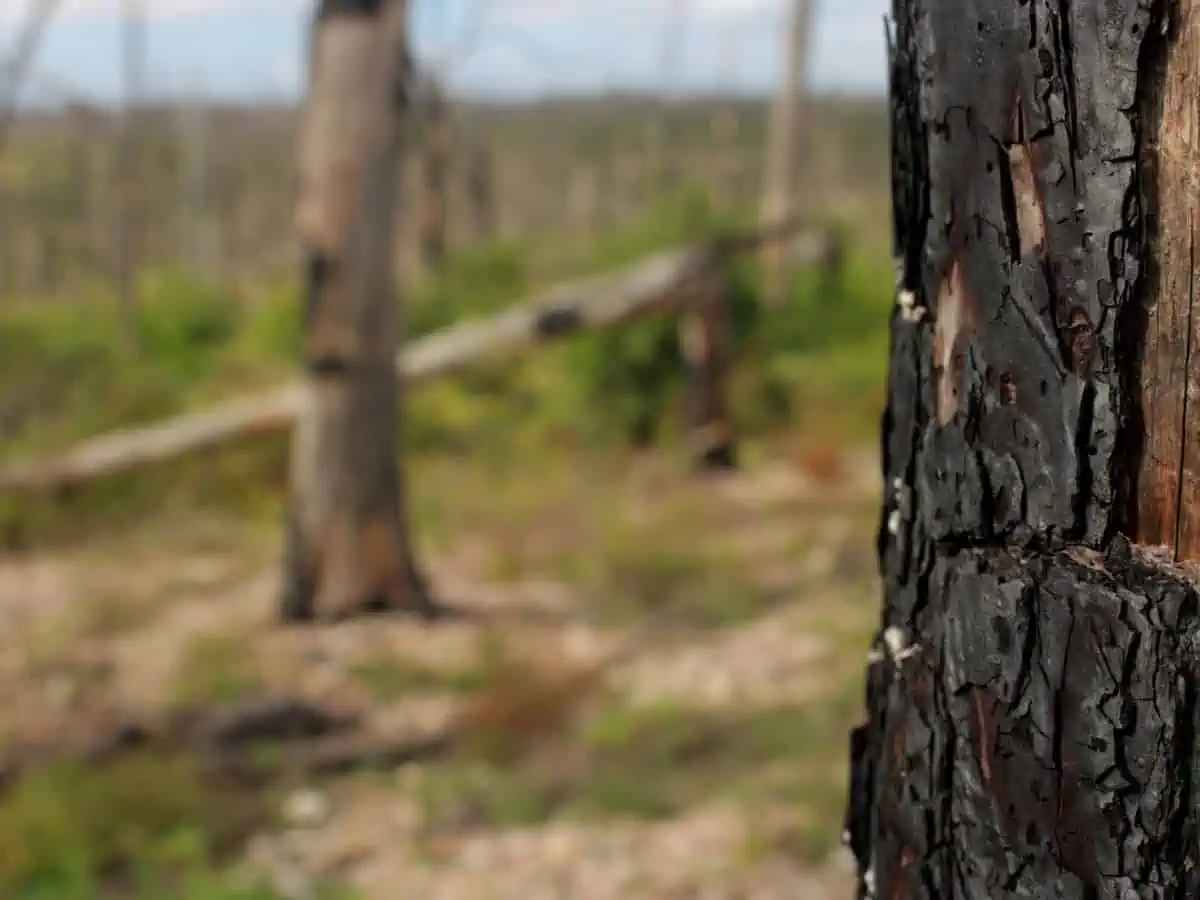
- What Is the Texas Burn Ban?
- Reasons for implementing a burn ban in Texas
- How Bad Is the Texas Drought?
- Which Counties Are Under the Burn Ban?
- The Current Level of Wildland Fire Preparedness
- The Stages of Drought Impact
- Tips for preventing wildfires during a burn ban
- Consequences of violating the burn ban in Texas
- The Texas Burn Ban FAQs
- The Economic Impact of Wildfires and Burn Bans on Local Communities
- Economic Impact of Wildfires:
- Economic Impact of Burn Bans:
What Is the Texas Burn Ban?
Texas burn ban refers to the prohibition of outdoor fires in Texas. These regulations are imposed due to Texas’s severe drought this fall. The government updates information related to this ban weekly.
The local government in Texas has the right to take action in severe weather conditions such as the drought we have this fall. A county commissioner’s court or judge can enact a burn ban prohibiting outdoor burning for public safety.
Reasons for implementing a burn ban in Texas
Burn bans are periodically implemented in various counties across Texas for various reasons, predominantly around safety and environmental concerns. Here are the primary reasons for implementing a burn ban in Texas:
- Drought Conditions: Texas can experience long periods of drought, during which the vegetation becomes extremely dry. Such conditions can turn even a tiny spark into a raging wildfire.
- High Fire Danger: When the weather is hot, dry, and windy, the potential for wildfires increases significantly. Burn bans can be implemented during these times to reduce the risk of human-caused fires.
- Air Quality: Burning can release particulates and pollutants into the air. When air quality is compromised, or there’s potential to become so, burn bans can help maintain cleaner air.
- Resource Limitations: Sometimes, burn bans are issued because firefighting resources are strained due to existing fires or because resources have been deployed to other areas.
- Protection of Property and Life: Wildfires can cause enormous damage to homes, infrastructure, and natural habitats, and they can also threaten human and animal life. Burn bans are a proactive measure to prevent such losses.
- Ecological Concerns: Fires can devastate ecosystems, killing plants and animals and rendering areas uninhabitable for extended periods. This can knock on local biodiversity and the balance of local ecosystems.
- Economic Impact: Wildfires can have significant economic impacts. Besides the direct costs related to firefighting efforts and infrastructure damage, long-term costs are associated with the loss of timber resources, tourism, and rebuilding.
- Health Concerns: Smoke from fires can exacerbate respiratory conditions like asthma, COPD, and other respiratory diseases. By reducing the risk of wildfires, burn bans also help safeguard public health.
- Soil Erosion: After a fire, the loss of vegetation can lead to increased soil erosion, which can impact water quality, result in the loss of fertile topsoil, and contribute to flash flooding.
- Water Conservation: Firefighting requires substantial amounts of water. In areas where water is scarce, especially during droughts, it’s essential to conserve this resource by preventing fires.
Local governments in Texas monitor various indicators to determine when to implement burn bans. Residents and visitors are expected to comply with these bans to ensure the safety and well-being of the community and its environment.
How Bad Is the Texas Drought?
The drought is really hard this year. There have already been some wildfires. For instance, the Texas A&M Forest Service has managed to contain five wildfires for about 47.5 acres across Texas.
Texas has witnessed a huge dry spell this fall. After a short cold period, the weather has become increasingly dry. Now, timber litter fuels are drying up fast, especially in the eastern part of the state.
On top of that, the increased speed of wind can accelerate the spread of wildfires in East, North, and Central Texas.
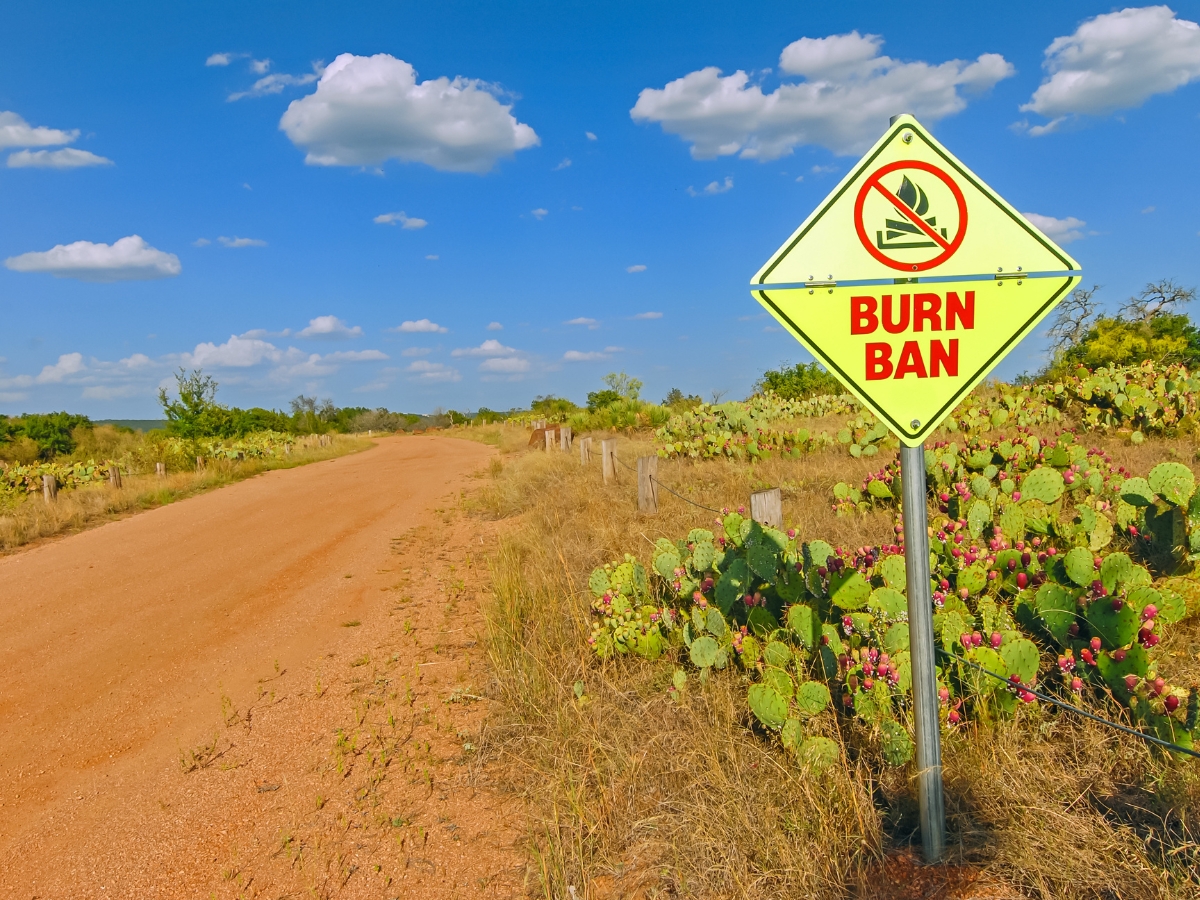
Which Counties Are Under the Burn Ban?
Up until now, about 143 counties in Texas are affected by the drought. They’re currently under the burning ban until further notice.
The matter is probably more serious than you think. Here’s a list of wildfires that have already been contained this October:
| Fire Name | Area | County |
| Leon 5843 Fire | 11.1 acres | Leon County |
| Cass 5840 Fire | 1 acre | Cass County |
| Shelby 5838 Fire | 29.1 acres | Shelby County |
| Walker 5837 Fire | 1.5 acres | Walker County |
| Harrison 5841 Fire | 5 acres | Harrison County |
The Current Level of Wildland Fire Preparedness
This fall, Texas A&M Forest Service raised the level of wildland fire preparedness to Level 2. This is mainly due to the sudden increase in wildfire activity, especially in the eastern part of the state.
The excessive drought we’ve faced recently has accelerated the circulation of dangerously dry air. In addition, this constant dry air and the increased speed of wind help spread wildfire rapidly.
The role of the Texas A&M Forest Service in monitoring and managing wildfires
The Texas A&M Forest Service (TFS) plays a crucial role in wildfire monitoring, management, and prevention within Texas. Here’s a breakdown of their role:
- Wildfire Detection and Reporting: TFS operates an advanced system of fire detection, which includes lookout towers, satellite monitoring, and collaboration with local entities to rapidly identify and report wildfires.
- Response Coordination: TFS coordinates with local fire departments and emergency services to respond to wildfires. They can mobilize state and national resources, ensuring a timely and effective response.
- Equipment and Personnel Provision: TFS provides firefighting equipment, aircraft, and personnel to support local fire departments during wildfire events. They also have specialized teams trained in wildfire management techniques.
- Training: TFS offers training programs for local fire departments, enhancing their capacity to prevent and combat wildfires. This includes courses on wildfire behavior, safety, and suppression techniques.
- Public Education: TFS actively promotes public awareness about wildfire risks, prevention, and preparedness. Their educational campaigns inform Texans about burn bans, fire danger levels, and best practices for fire safety.
- Fuel Reduction Programs: One preventive measure against wildfires is to reduce the amount of combustible material in an area. TFS runs programs like prescribed burning, mechanical thinning, and herbicide applications to reduce wildfire fuel loads.
- Wildfire Risk Assessment: The TFS continuously assesses wildfire risks in different regions of Texas, helping guide decision-making for prevention and response strategies.
- Research and Development: TFS collaborates with Texas A&M University and other institutions to conduct research on fire behavior, prevention, and mitigation. This research helps inform strategies and practices in Texas and beyond.
- Community Assistance: TFS works with communities to develop Community Wildfire Protection Plans (CWPPs). These plans help communities identify and address their unique wildfire risks.
- Grant Programs: TFS administers grant programs that provide financial assistance to local fire departments for training, equipment, and capacity-building.
- Collaboration with Other Entities: TFS collaborates with other state and federal agencies, non-profits, and private entities to enhance the state’s overall wildfire management and prevention capabilities.
In essence, the Texas A&M Forest Service serves as a linchpin in Texas’s wildfire management system, coordinating resources, providing expertise, and ensuring that both rural and urban areas have the support they need to address wildfire threats.
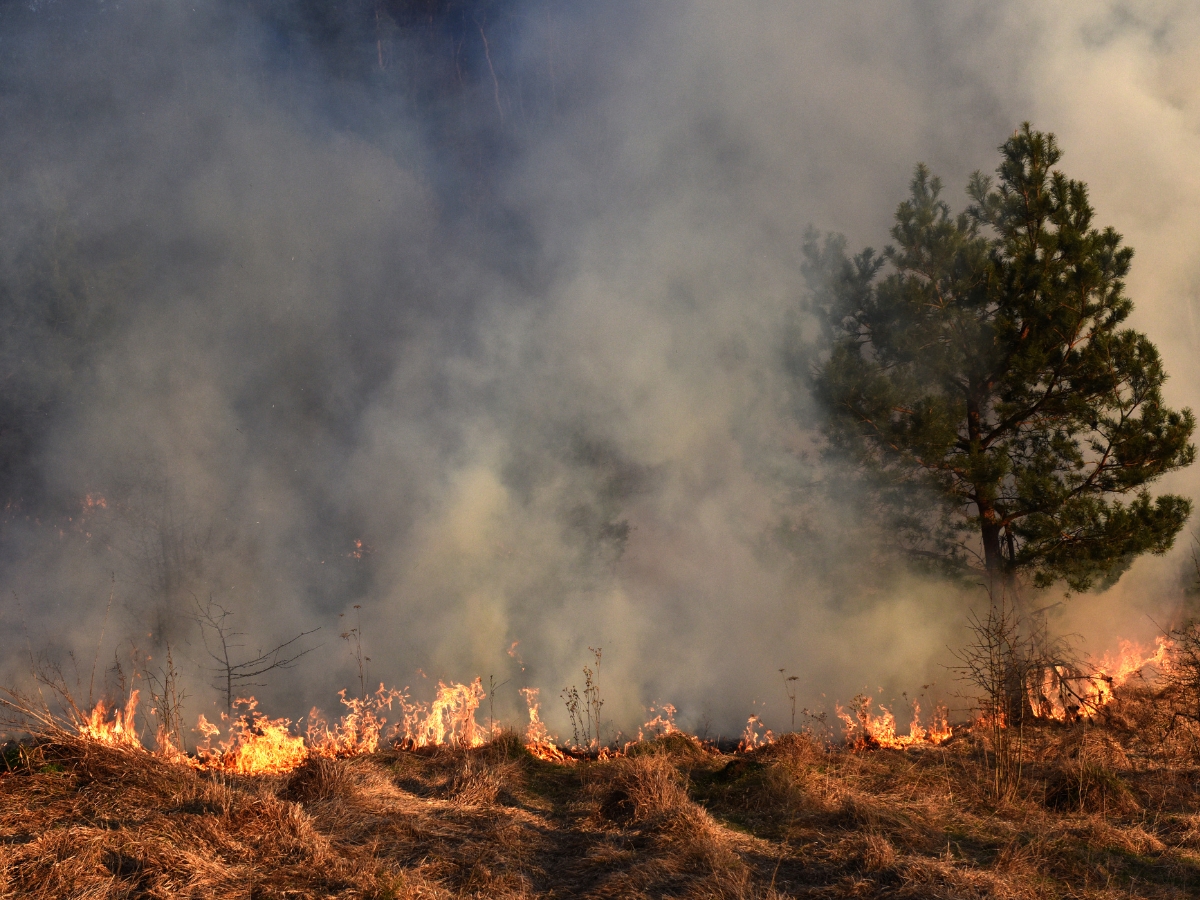
The Stages of Drought Impact
According to the U.S. Drought Monitor, drought comes in five different stages:
- D0: Abnormally dry areas that might be entering or finishing drought spells
- D1: Moderate
- D2: Severe
- D3: Extreme
- D4: Exceptional
Here are the impacts each stage can have over the area:
D0 – Abnormally Dry
- Postponing planting
- An increase in grass fires
- Reducing the cutting of hay
- Producers begin supplemental feeding for livestock
- Forage germination is hindered
- A decrease in surface water levels
D1 – Moderately Dry
- Impeding the growth of dryland crops
- Early cattle sales
- An increase in the frequency of wildfires
- Low-stock tanks, creeks, streams
- Raising the need to request voluntary water restrictions
D2 – Severely Dry
- No planting due to the hard soils
- A general decrease in crop yield
- Wildfires reaching populated areas
- Compromising hydroelectric power
- An increase in well-water consumption
- Poor pasture conditions
- The implementation of mandatory water restrictions
- The enactment of burn bans
D3 – Extremely Dry
- Soil cracks due to the lack of moisture
- The occurrence of dust or sand storms
- A high risk of wildfires
- The need arises for supplemental feed, protein, water, and nutrients for livestock
- Sharp decline in fish, wildlife, and plants
- Failure to germinate row or forage crops
- The decrease in irrigated crops
- A sharp fall in the yield of dryland crops
- The culmination of financial burdens in different sectors
- A noticeable decline in water levels
- The contamination of water due to the weak flow of rivers
D4 – Exceptionally Dry
- Excessive loss of crop yields
- The widespread of algae in water due to the lack of flow
- Lands become increasingly arid, losing the ability to produce plants
- An exceptionally high risk of fires
- Restrictions of simple activities such as barbecues or fireworks
- A sharp increase in trees’ mortality rate
- The premature slaughter of livestock due to the shortage of hay and water
- Significant losses in several sectors such as tourism, agriculture, forestry, and seafood production
- An incredibly sharp decline in water levels
- Closing boat ramps
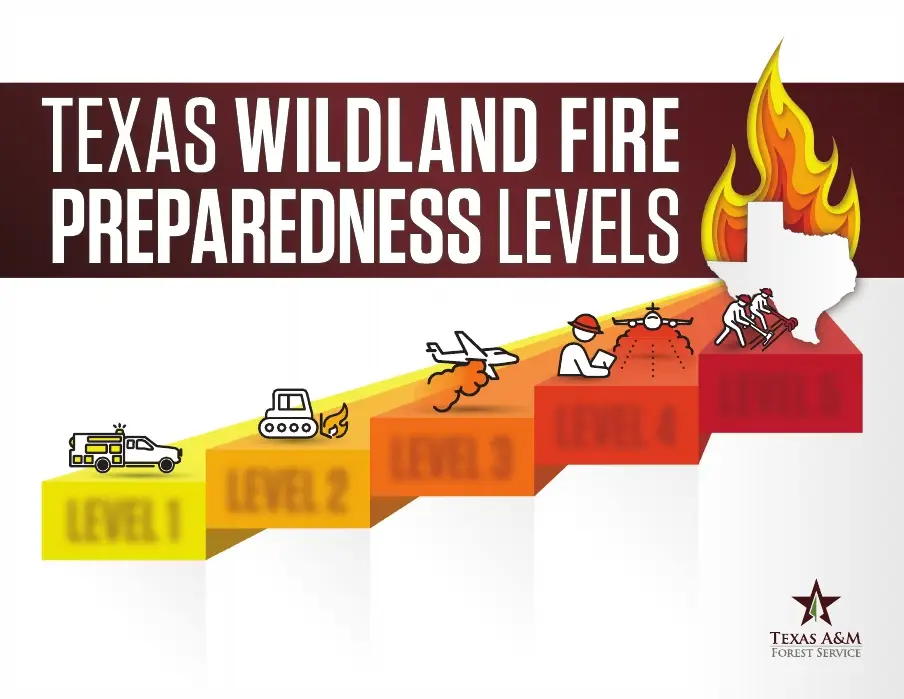
Tips for preventing wildfires during a burn ban
Preventing wildfires is a collective responsibility, especially during burn bans when the risk is heightened. Here are some crucial tips to help prevent wildfires during such periods:
- Adhere to the Burn Ban: Respect the rules of the burn ban, which generally prohibit outdoor burning. This includes not burning trash, leaves, or brush.
- Exercise Caution with Equipment:
- Avoid parking vehicles on dry grass. The heat from exhaust systems can ignite the grass.
- When using equipment like chainsaws or lawnmowers, ensure that spark arresters are in place and functional.
- Refrain from welding or grinding near dry vegetation.
- Safe Cigarette Disposal: Do not discard cigarette butts or matches on the ground, especially in dry areas. Always use an ashtray.
- Be Cautious with Campfires: If campfires are allowed, ensure they are built in established fire rings or pits. Keep a shovel and water nearby, and always completely extinguish the fire before leaving.
- Barbecue Safely: When using charcoal grills, propane, or open flames:
- Set up the grill away from flammable materials and overhanging branches.
- Always monitor the grill while in use.
- Ensure coals are completely cool before disposing of them.
- Avoid Fireworks: Refrain from using fireworks during burn bans. Even small sparks from fireworks can cause a wildfire in dry conditions.
- Store Flammable Materials Properly: Store propane tanks, gasoline cans, and other flammable materials in a safe location away from potential ignition sources.
- Be Prepared: Keep a hose, buckets of water, and a shovel nearby when working outdoors. Being prepared can help you respond quickly if a small fire does break out.
- Educate Others: Share information about the burn ban and fire prevention with neighbors, friends, and family. The more informed people are, the better they can prevent fires.
- Maintain a Defensible Space: Around homes and structures, clear dead vegetation, leaves, and other flammable materials. Keeping a buffer can prevent a wildfire from reaching your home.
- Use Caution with Power Equipment: Refuel lawnmowers and power tools away from vegetation and only when the engine is cool. Avoid using power equipment on windy days.
- Report Suspicious Activities: If you observe anyone disregarding burn ban restrictions or engaging in activities that might start a wildfire, report it to local authorities.
- Stay Informed: Regularly check local news or official sources for updates on burn bans, fire danger levels, and any potential fire activity in your area.
By taking these precautions and promoting awareness, individuals can play a significant role in reducing the risk of wildfires during burn bans.
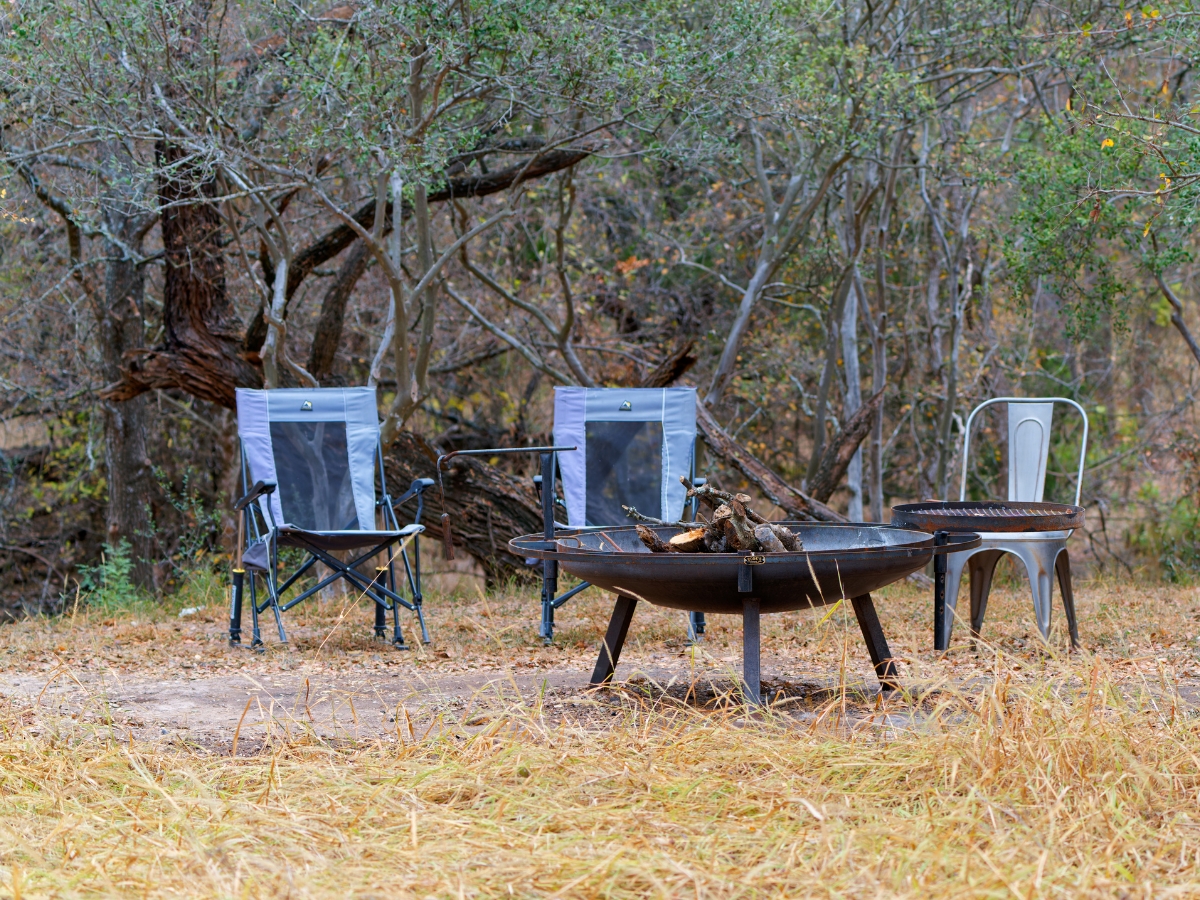
Consequences of violating the burn ban in Texas
In Texas, violating a burn ban can result in serious consequences, both legal and financial. Here’s what one could face if caught violating the ban:
- Criminal Charges: In many Texas counties, violating a burn ban is considered a Class C misdemeanor. However, depending on the county and circumstances, the violation can be elevated to a Class B or Class A misdemeanor, especially if the violation results in a wildfire or poses significant danger.
- Fines: If convicted of a burn ban violation, fines can be substantial. For a Class C misdemeanor, fines can be up to $500. If escalated to a Class A or B misdemeanor due to the consequences of the violation, fines could go up to $2,000 or even $4,000, respectively.
- Restitution: If a burn ban violation leads to a wildfire, the person responsible may be required to pay restitution. This could include costs associated with firefighting efforts, damage to property, or other related expenses. Given the potential scale and destructiveness of wildfires, this can result in significant financial liability.
- Civil Liability: In addition to the criminal consequences, individuals who violate a burn ban and cause a fire may be subject to civil lawsuits from those who suffer damages as a result of the fire. This could include property owners, insurance companies, or others.
- Jail Time: While it’s more common for violators to face fines, jail time is possible, especially for Class A or B misdemeanors. The length of imprisonment can vary based on the misdemeanor class and circumstances.
- Additional Penalties: Depending on the county or jurisdiction, there might be other consequences for violating a burn ban. For example, some jurisdictions might revoke certain permits or licenses if a person or business is found in violation.
- Reputation Impact: Violating a burn ban and causing harm can also have
reputational consequences. For businesses, this might mean loss of customers or clients due to negative publicity. For individuals, this could lead to strained community relations or challenges in professional contexts.
The Texas Burn Ban FAQs
How do we know where and how bad drought is?
This is a task for the U.S. Drought Monitor (USDM), which uses many different tools. Experts at the USDM work with local observers to synthesize and interpret data from various sources, such as
- Satellite-based assessments of vegetation health
- The Keetch-Byram Drought Index for fire
- The Palmer Drought Severity Index
- The Standardized Precipitation Index
- The Surface Water Supply Index
Driving from all these sources makes the USDM a unique tool.
It also monitors the effect of drought on people, industries, and livestock through a great number of observers across the country.
What is considered a violation of the burn ban and how is it punished?
The bottom line is that any form of open fire is a violation if you’re under a burning ban. Here’s a list of activities you can’t do if a burn ban is in effect
- Burning yard waste like grass or leaves
- Using fire to clear lands of any form of natural vegetation
- Burning any combustible material without an enclosure to contain sparks and flames.
If you fail to abide by these rules, you face a Class C Misdemeanor, which can be punished by a fine that reaches up to $500.
The Economic Impact of Wildfires and Burn Bans on Local Communities
Wildfires and burn bans can have significant and diverse economic impacts on local communities. Let’s examine the effects of each:
Economic Impact of Wildfires:
- Property Damage: The most immediate and visible economic impact is the destruction of homes, businesses, and infrastructure. Reconstruction can be costly, and not all losses are recoverable.
- Lost Revenue for Businesses: Evacuations and reduced accessibility can lead to businesses losing revenue during and after wildfires. This is particularly true for tourism-dependent communities.
- Reduction in Property Values: Areas affected by wildfires might see a temporary or even long-term decrease in property values due to the loss of vegetation, the risk of future fires, or the stigma attached to the area.
- Increased Public Expenditure: Local governments have to spend significantly on emergency response, rehabilitation, and recovery. These costs can strain local budgets.
- Loss of Natural Resources: Timber, wildlife, and other natural resources may be lost, impacting industries that rely on them.
- Health Costs: Respiratory and other health issues aggravated by the smoke and pollutants from wildfires can lead to increased medical expenses and lost labor productivity.
- Tourism Impact: Tourist areas impacted by fires can experience reduced visitation for months or even years, leading to significant losses for businesses that depend on tourist dollars.
- Post-Fire Hazards and Costs: The aftermath of a wildfire can increase susceptibility to landslides, flash floods, and soil erosion. Addressing these issues requires further expenditure.
Economic Impact of Burn Bans:
- Restriction on Agricultural and Land Management Practices: Burn bans can impact farmers and land managers who rely on controlled burns for land management, pest control, or crop residue management.
- Potential Loss for Firewood and Biomass Businesses: Those who rely on selling firewood or biomass for heating or energy production might see a decline in business during a burn ban.
- Reduced Recreational Activities: Campgrounds and recreational areas might see a drop in visitation if campfires and other burning are prohibited.
- Benefits from Avoided Costs: While burn bans may have some negative economic impacts, they can also lead to avoided costs by preventing wildfires. The economic losses prevented by averting potential fires can outweigh the immediate costs associated with burn bans.
- Temporary Impact on Local Businesses: Some local businesses, like those selling fire starters, firewood, or outdoor burning equipment, might experience a downturn during a burn ban.
It’s essential to consider the balance between the economic impacts of wildfires and burn bans. While burn bans might have short-term economic effects on specific industries or activities, they are designed to prevent the potentially catastrophic and long-term economic consequences of uncontrolled wildfires.
For fire danger and current information, visit Texas A&M Forest Service for more; https://tfsweb.tamu.edu/CurrentSituation/
References
Christian Linden is a seasoned writer and contributor at Texas View, specializing in topics that resonate with the Texan community. With over a decade of experience in journalism, Christian brings a wealth of knowledge in local politics, culture, and lifestyle. He holds a Bachelor's degree in Communications from the University of Texas. When he's not writing, Christian enjoys spending weekends traveling across Texas with his family, exploring everything from bustling cities to serene landscapes.











